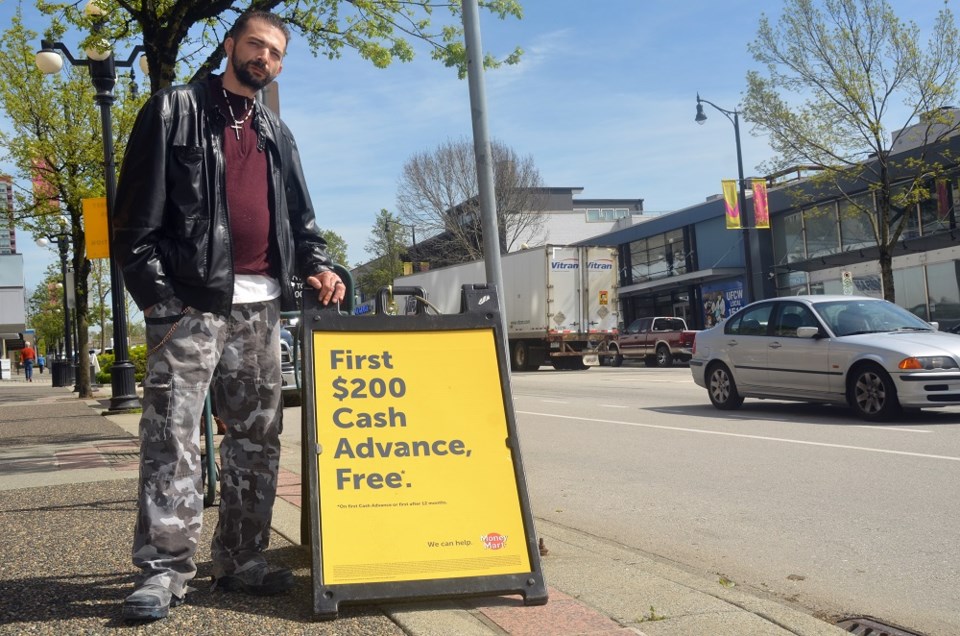It’s time to review B.C.’s seven-year-old payday loan legislation, says an anti-poverty organization.
At a rally held in front of the Money Mart at Columbia Street and Fourth Street on Friday, members of the B.C. chapter of the Association of Community Organizations for Reform Now (ACORN) called on the Solicitor General and Minister of Public Safety to follow Ontario and Alberta’s lead and reassess its payday loan regulations.
Payday loan use has “skyrocketed” in the past years, they argue, trapping some of the province’s most vulnerable residents into a cycle of debt.
“What we’re finding with some of our members is when they have to pay the money back, they can’t, so they have to go to another company,” B.C. ACORN board member Monica McGovern told the Record at the rally. “These are low-income workers, even middle-income workers, who are stretched too tight.”
She says the current system needs to be regulated to avoid borrowers from using one loan to pay down another.
Under the current rules, a lender can issue a loan up to 50 per cent of the borrower’s net pay and can charge up to 23 per cent in interest on the borrowed amount. But McGovern says that’s too high.
“We’d like to see them offer a longer pay period that’s more realistic and we’d like to see them lower their interest rates,” she adds.
A Vancity report published in January concluded the number of British Columbians are using payday loans at a higher rate when compared to other provinces. Between 2012 and 2014, the number of borrowers in B.C. grew by 58 per cent, while the number of people who had 15 or more loans increased by 604 per cent.
New West resident Steven McMurtrie took out his first payday loan six years ago for a couple hundred bucks. On disability and with no job at the time, he couldn’t pay it back, so he went to three more fast-cash shops. Today, he still owes around $1,000, but hasn’t taken out a loan in three years.
“It’s a vicious cycle. I’m having a hard time putting food on the table,” he says, adding his disability cheque only leaves him with $180 after his rent is paid and his part-time job doesn’t provide steady income.
The Ministry of Public Safety, meanwhile, is currently working on a proposal for a review of the payday loan legislation, expected to be on the minister’s desk by the end of this year.
“The B.C. government is committed to reducing the maximum fees payable on payday loans from $23 per $100 borrowed to $17 per $100 borrowed,” reads an emailed statement. “The payday loan industry is rapidly evolving and the government is always looking for new ways to ensure the protection of consumers.”



